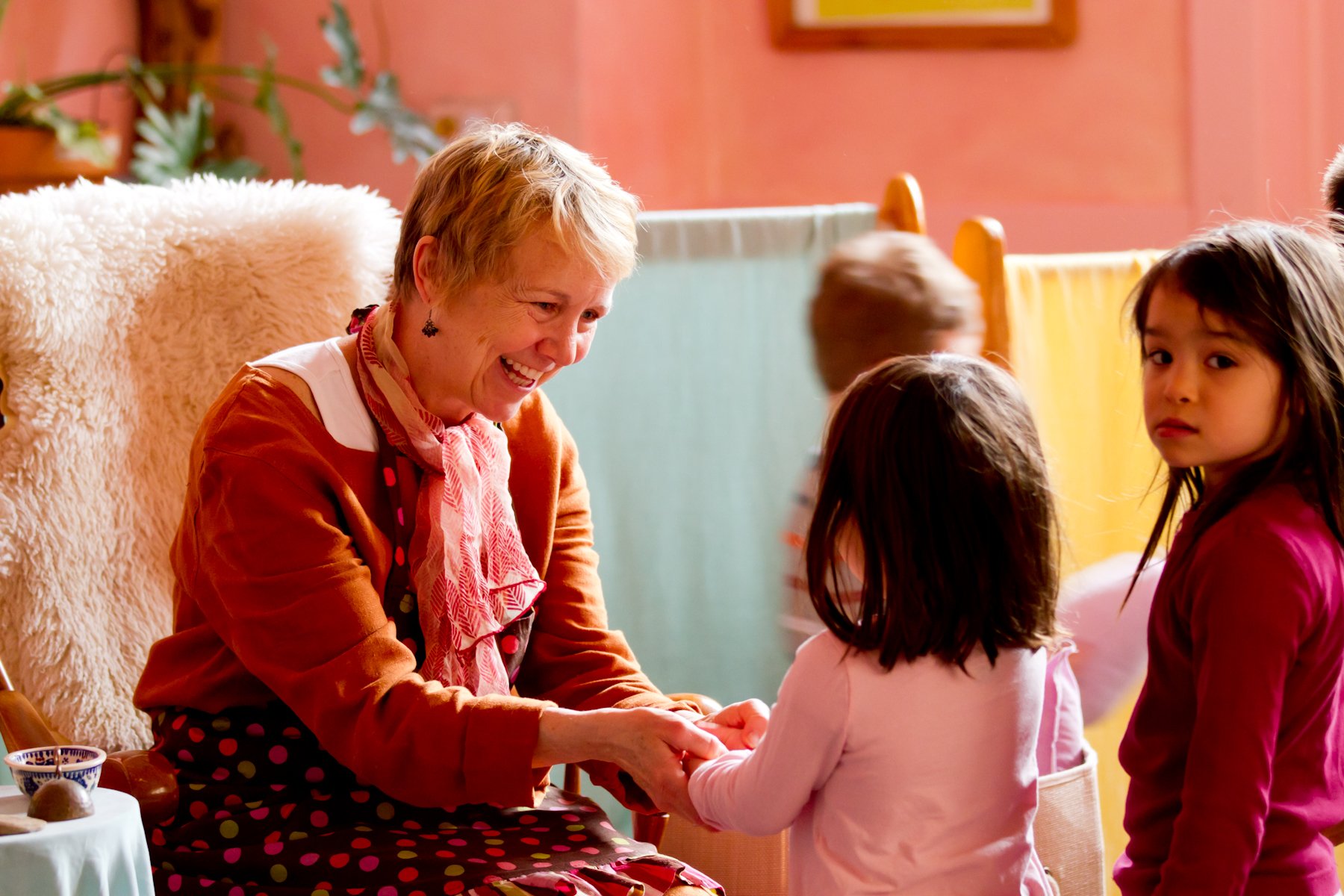“We are fully human only while playing, and we play only when we are human in the truest sense of the word.”
- Rudolf Steiner, founder of Waldorf education
Education should be joyful.
For fifty years, from Pre-K through 12th grade, the Chicago Waldorf School has cultivated life-long learners by imbuing education with playful exploration and joyful passion. By nurturing each student’s individuality, we encourage our young people to meet the world on their own terms and contribute their unique perspective to an ever-growing global community.
No subject at our school takes precedence over any other - they are all interwoven, both in theory and practice, bolstering and enriching each other and providing our students with opportunities for continuous growth. Here, our sculptors are our mathematicians, our musicians, our athletes, and everything in between. We firmly believe that no matter who you are, you can be yourself here.
Chicago Waldorf School graduates, simply put, go on to pursue their dreams.
Whether they’re designing sports stadiums, founding dance companies, designing couture fashion, starting non-profit animal shelters, studying extra-planetary space travel, making independent films, or becoming educators themselves, Waldorf students bring their senses of curiosity, creativity, and courage wherever they go. After years of challenging themselves, experimenting academically and artistically, and growing into their identity, they are truly ready for anything.












a vibrant community
Serving children aged 9 months to 18 years, the Chicago Waldorf School has a robust community of students in a variety of developmental phases. Walking through the school, in a few brief moments you can see an Early Childhood student learning to tie their shoes, a Grade Schooler practicing their times tables, a Middle Schooler knitting their own clothing, and a High Schooler preparing their senior project.
languages spoken
Our faculty, staff, students, and community members represent an array of neighborhoods, cultures, and countries, and speak a number of different languages.
Română | 中国人 | አማርኛ | Español | Polskie Bosanski | русский | English | Français | Deutsch Português | עִברִית | Tagalog | සිංහල | татарлар عربى | Italiano | हिन्दी | ܐܵܬ݂ܘܼܪܵܝܲܐ ܠܸܫܵܢܵܐ
46% Students of Color
46% of our students identify as people of color, representing a number of different local communities from all over Chicago, as well as a number of international communities from South America to Africa.
family individualized tuition
We are, first and foremost, a community of individuals. We hail from five different continents, dozens of countries, and over 30 local neighborhoods. We represent a variety of different religions, genders, skin colors, abilities, and sexualities. Each of us brings something wholly unique, enhancing the richness and vibrancy of the entire school community. The Family Individualized Tuition (FIT) model is built to ensure that we can continue to welcome an ever-wider array of individuals from all over the city, the country, and the world, and grow our community in new and exciting ways.
Frequently asked questions
-
Sort of! The first Waldorf school was developed by Rudolf Steiner in 1919 for the children of the Waldorf-Astoria Cigarette Factory workers in Stuttgart. Consequently, the school came to be known as the “Waldorf” school. The Astor family, who owned the factory, later developed the Waldorf-Astoria hotel chain. The “Waldorf” in “Waldorf-Astoria” comes from the town of Walldorf in south-west Germany, where the Astor family originated.
-
Sort of! Waldorf Salads first originated in the Waldorf-Astoria Hotel in New York City, so the name of the salad also traces back to the Astor family, just like the “Waldorf” in Waldorf schools.
-
Rudolf Steiner, the founder of Waldorf education, also developed a spiritual philosophy called Anthroposophy, which informed his work in many different areas, including in education. However, the Chicago Waldorf School is non-sectarian and not affiliated with any religion or spiritual practice. As a part of our cultural and historical curricula, we introduce students to religious beliefs and practices from all over the world.
-
Rudolf Steiner developed Waldorf education in Germany around the same time that Maria Montessori developed her own pedagogy in Italy. They were both considered progressive models of education created in response to mass industrialization, and, consequently, share some essential principles, but, in practice, are entirely distinct.
-
The Chicago Waldorf School is not an art school. Waldorf education, however, views creative and artistic expression as inherent to all subjects, giving students a number of ways to engage with material, while also nurturing social and emotional development.
-
Studies continue to show that exposure to media and technology at an early age can have a stifling effect on child development. For this reason, Waldorf schools do not rely on technology in the classroom. As students get older, particularly in Middle School and High School, technology is introduced as a vital resource for certain aspects of education. We make sure to introduce technology in a thoughtful and intentional way, actively engaging students in conversations about the ethical and pro-social responsibilities inherent in technological and internet usage.
-
As with all subjects, Waldorf takes an experiential approach to reading.
Pre-reading skills are developed in the Early Childhood by introducing children to oral stories and folk tales, growing their vocabulary and building their comprehension skills. There, they also develop fine motor skills through baking, preparing food, coloring, and painting. By the time they reach the first grade, they are prepared to begin direct instruction.
In the first grade, students are taught consonants and vowel names and sounds through an artistic approach of drawing, painting, movement, and speech, putting into practice the skills they developed in the Early Childhood. By the end of the year, they are reading and writing words and short sentences, and are prepared for more intensive reading and writing in the second grade.
-
The short answer is: wherever they want! After a career of integrated learning with an emphasis on emotional development, social responsibility, and individual expression, our students repeatedly go on to receive precisely the college education they desire. Of course, college isn’t for everyone! Some students decide to forego college in order to pursue other goals and we support those students wholeheartedly, giving them the resources they need to get started on their path.
-
Grading methods vary slightly by class and by project, but, in general, students receive individualized, written evaluations by each teacher. We do not believe that a child can be represented by a single letter, and so do not rely on a traditional grading system for our own records.
Similarly, CWS does not participate in standardized testing. Of course, High School students may take the ACT and/or SAT when the time is right.













